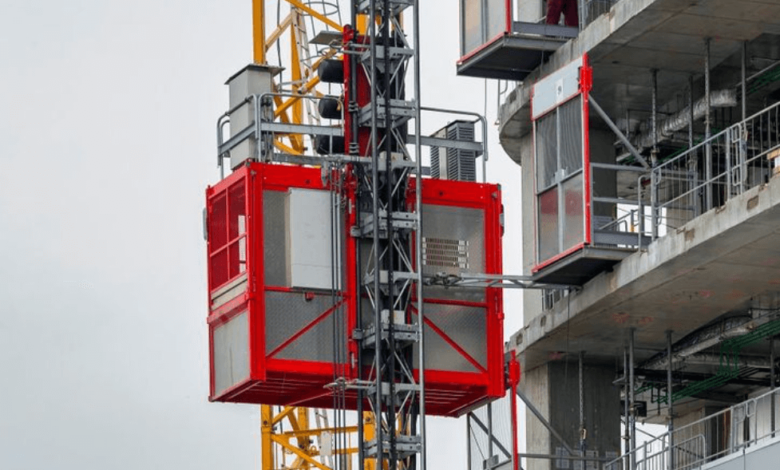Unlocking the Backbone of Vertical Transport: Inside a Construction Hoist China Factory

Skyscrapers, bridges, and high-rise apartments are impossible to complete efficiently without the right machinery to lift workers and materials swiftly and safely. Among these essential tools, the construction hoist has emerged as a cornerstone of modern building practices. And when it comes to manufacturing these machines, no country dominates the industry quite like China. This article takes you inside a construction hoist China factory, exploring its innovation, manufacturing process, global impact, and future trajectory.
Understanding the Role of Construction Hoists
Before we delve into the inner workings of a construction hoist China factory it’s essential to understand what a construction hoist is. Often referred to as a man-lift or material lift, a construction hoist is a vertical transport machine used at construction sites to lift personnel and heavy materials between ground level and various building floors.
Types of Construction Hoists
- Material-only Hoists – Built exclusively for heavy loads like steel, cement, and lumber.
- Rack and Pinion Hoists – The most common type in China, known for safety and mechanical reliability.
See also: Dos and Don’ts to Get the Best Performance from Your Home Controller System
Why China Leads the Global Construction Hoist Market
China has become synonymous with large-scale, cost-efficient manufacturing. Its dominance in the field of construction hoists can be attributed to several factors:
1. Massive Industrial Infrastructure
A construction hoist China factory typically operates in industrial hubs like Jiangsu, Shandong, or Zhejiang. These provinces are known for their sophisticated supply chains, skilled labor forces, and proximity to export ports.
A Deep Dive into a Construction Hoist China Factory
Let’s step inside a typical construction hoist China factory to understand the journey from raw material to final product.
Raw Material Procurement
Chinese factories often have strong ties with domestic steel mills, ensuring steady supply and cost control.
Cutting and Shaping
Next, the materials go through CNC laser cutting machines to ensure precision. These cuts will form the base plates, cage structures, and mast sections.
Welding and Assembly
Robotic arms weld the pieces together to form rigid, lightweight frames. Each weld is tested for structural integrity. The gear racks, guide rollers, and safety devices are then installed.
Painting and Anti-Corrosion Treatment
All parts are treated with anti-corrosion coatings—essential for construction hoists that operate in harsh outdoor conditions.
Quality Control and Testing
Before any hoist leaves the construction hoist China factory, it undergoes rigorous testing. This includes load testing, speed testing, emergency braking, and safety system simulations.
Innovation in Chinese Construction Hoist Factories
China’s hoist factories are no longer content with producing cheap alternatives. Many now compete at the top-tier of innovation and technology.
IoT Integration
Some factories produce smart hoists with IoT sensors that monitor machine health, usage data, and performance analytics in real-time.
Energy Efficiency
Eco-conscious factories are adopting regenerative braking systems that convert kinetic energy into electricity, reducing energy consumption by up to 30%.
Leading Construction Hoist Brands in China
- ZOOMLION – A global player with a vast range of lifting solutions.
- GJJ/BAODA – Known for its reliable rack and pinion systems.
- XCMG – Combines smart systems with heavy-duty design.
- SCZ Machinery – A mid-sized factory with strong export presence in Southeast Asia and the Middle East.
Export Trends and Global Reach
Chinese hoists are used globally, from New York’s skyscrapers to African infrastructure projects. The ability of a construction hoist China factory to deliver fast, affordable, and customizable solutions has made them the first choice for contractors worldwide.
Key Export Destinations:
- Middle East (UAE, Saudi Arabia)
- Southeast Asia (Malaysia, Indonesia)
- South America (Brazil, Chile)
- Europe (Russia, Eastern Europe)
Compliance and Certification
To sell internationally, Chinese factories adhere to strict compliance standards:
- CE Certification (Europe)
- ISO 9001 Quality Management
- ANSI/ASME Standards (U.S.)
- SGS/BV Inspections for international buyers
Environmental and Ethical Considerations
Sustainability is increasingly important. Modern construction hoist China factories are incorporating:
- Solar-powered production plants
- Recycling of steel scraps
- Fair labor practices and worker welfare
- ISO 14001 Environmental Management Systems
Challenges Faced by the Industry
Despite the successes, Chinese construction hoist manufacturers face several hurdles:
- Trade Barriers and Tariffs – Particularly in the U.S. and Europe.
- Copycat Products – Imitation hoists can damage brand reputations.
- Post-Pandemic Supply Chains – Delays in shipping and materials remain an issue.
- Strict Safety Regulations – Ever-changing compliance laws make exports more complex.
The Future of the Construction Hoist Industry in China
With the world urbanizing rapidly, the demand for vertical lifting equipment is set to explode. China’s hoist factories are gearing up for this next phase by:
- Partnering with AI developers for autonomous hoists
- Investing in AR/VR tools for training and maintenance
- Expanding into emerging markets like Africa and Central Asia
- Offering leasing and support services through overseas branches
Final Thoughts
When we look at the heart of modern construction, vertical transportation stands tall—literally. A construction hoist China factory represents more than just machinery production; it symbolizes the fusion of innovation, affordability, and scale. With advancements in safety, intelligence, and sustainability, these factories are not just keeping pace with the world—they’re helping build it.
Whether you’re a contractor looking for reliable hoisting equipment or a researcher exploring global manufacturing trends, China’s role in shaping the vertical transport industry is undeniably transformative.




